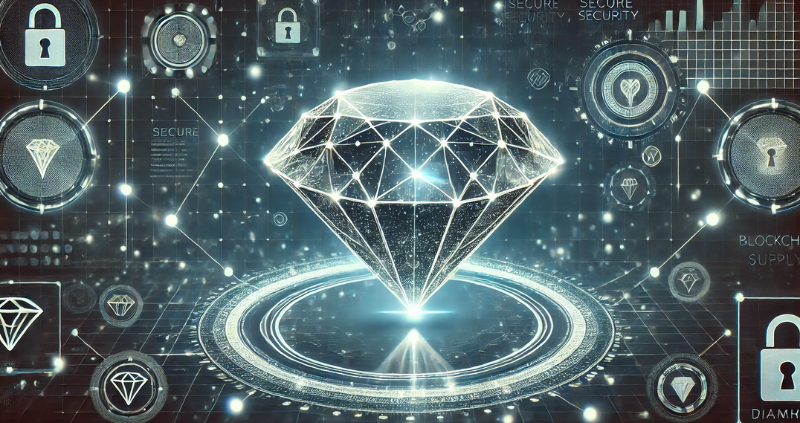Blockchain in Diamonds: Enhancing Transparency and Trust in Supply Chains

The diamond industry, renowned for its sparkle and prestige, has long grappled with shadows, conflict diamonds, opaque supply chains, and consumer doubts about authenticity. As of March 28, 2025, a transformation is underway, powered by blockchain technology. This decentralised, tamper-proof ledger is revolutionising how diamonds are tracked from mine to market, promising unparalleled transparency and trust. But how does it function, and why does it matter for businesses and consumers alike?
The Diamond Supply Chain Challenge
Diamonds embark on a complex journey. A natural stone might originate in a Botswana mine, be cut in India, polished in Antwerp, and sold in a London jewellery boutique. Lab-grown diamonds, meanwhile, emerge from high-tech facilities but still require provenance to assure buyers of ethical production. At every stage, there’s potential for error, fraud, or ethical breaches. Historically, paper-based records or centralised databases have been susceptible to tampering, leaving consumers questioning: Is this diamond genuinely conflict-free? Is it what the seller claims?
Enter blockchain. By logging each transaction or transfer on an immutable digital ledger, blockchain ensures a diamond’s story, its origin, ownership, and certifications—remains intact and verifiable. This isn’t merely a tech buzzword; it’s a game-changer for an industry under pressure to prove its integrity.
How Blockchain Works in Diamonds
Picture a diamond with a digital passport. When it’s mined or created, its details weight, colour, clarity, and source are recorded on a blockchain platform. As it progresses through the supply chain, every transfer is logged in real time, from miner to cutter to retailer. These entries are encrypted and linked, meaning no one can alter the history without leaving evidence. Companies like De Beers have led the charge with their Tracr platform, tracking natural diamonds at scale. Similarly, Everledger collaborates with jewellers to authenticate both natural and lab-grown stones.
For consumers, this means scanning a QR code on a diamond’s certificate could reveal its full history no more relying on vague promises. For businesses, it’s a safeguard against fraud and a means to comply with regulations like the Kimberley Process, which seeks to eliminate conflict diamonds but has struggled with enforcement.
Building Trust in a Sceptical Market
Trust is the diamond industry’s currency, and blockchain is forging it anew. In 2025, with lab-grown diamonds doubling sales (as Swarovski recently noted) and natural diamond markets rebounding in regions like China, buyers are more discerning than ever. They demand proof of sustainability and ethics, particularly as lab-grown options challenge mined stones’ dominance. Blockchain provides that proof, bridging the gap between producer claims and consumer expectations.
Consider a retailer in Dubai, now a hub for lab-grown diamonds. Using blockchain, they can demonstrate precisely where their stone was synthesised, under what conditions, and how it reached the shop—all supporting their credibility at no extra cost. For natural diamonds, it’s even more crucial. Botswana’s industry, facing competition, could use blockchain to assure buyers of ethical sourcing, reinforcing their premium status.
Beyond Transparency: Efficiency and Cost Savings
Blockchain isn’t just about trust—it’s about streamlining. Traditional supply chains involve intermediaries, paperwork, and delays. Blockchain eliminates much of this, reducing costs and accelerating transactions. A cutter in India can instantly verify a rough diamond’s origin, while a British jeweller can source parcels with confidence, knowing the data is secure. This efficiency is vital as the global diamond market expands, projected to reach £13.5 billion by 2030 for natural stones alone.
Challenges Ahead
Blockchain isn’t a perfect solution. Adoption demands investment, training, and industry-wide collaboration smaller players might trail behind giants like De Beers. Data privacy and interoperability between platforms also present obstacles. Yet, the momentum is undeniable: as of 2025, more companies are embracing blockchain, spurred by consumer demand and competitive pressure.
Your Role in the Future of Diamonds
The diamond industry stands at a crossroads, and blockchain is illuminating the path to transparency and trust. Whether you’re a supplier, jeweller, or buyer, this technology offers a chance to shine in a crowded market. Want to grow your diamond business locally and connect with the right suppliers instantly?Try the GA Demands App. It’s your free tool to source natural, lab-grown, and parcel diamonds locally, ensuring you’re part of this transparent, trust-driven future. Download it today and experience the difference because in diamonds, clarity isn’t just a grade; it’s a commitment.

